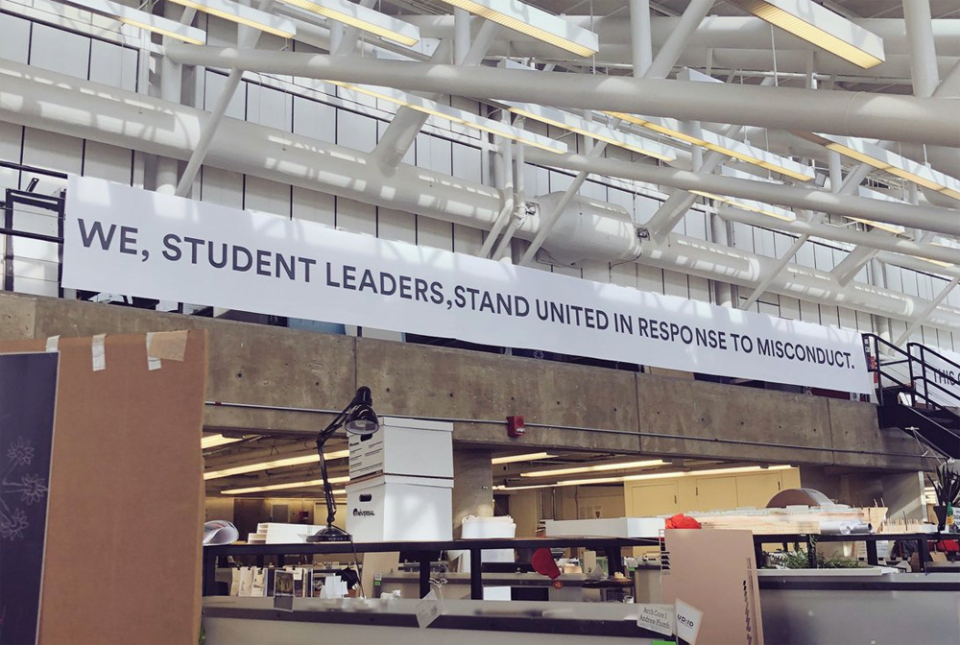Call for Articles: Places Journal
Editorial Guidelines: As a general rule, we are not looking for authors to write about their own teaching or studios, but rather to identify widespread practices and patterns. We are interested in reporting on innovative programs and courses, surveys and investigations of broad trends, and persuasive arguments about changes yet to come, grounded in strong narratives and storytelling.
This is an open call with no time limit and no restrictions on genre or format. We welcome proposals or finished manuscripts.
We, student leaders, stand united in response to misconduct. This cannot end in conversation. This must end in action. We expect and demand respect. We expect and demand transparency. We expect and demand safety. We expect and demand accountability.
— Protest sign at the Harvard Graduate School of Design, April 6, 2018
The design studio can be a hermetic space, steeped in tradition, but it is embedded in a radically changing world. New technologies shape modes of production and visualization. Economic shifts affect enrollment and labor conditions on campus, as well as job prospects for graduates. Political and environmental forces influence the kinds of work designers are trained to do.
Meanwhile, powerful social movements are fighting for equity, inclusion, and diversity on campus. Educators are diversifying their syllabi (if not their hiring). Students are forming “black in design” and “women in design” groups. Yet the work of transforming power structures and building accountability has barely begun.
In the last four months, Dr. Karen Kelsky’s crowdsourced survey “Sexual Harassment in the Academy” has collected nearly 2,500 reports of abuse and misconduct. In the wake of Richard Meier’s reckoning, the anonymously moderated “Shitty Architecture Men” list has been naming names. Some on the list are full-time educators; others are frequent lecturers and participants in design juries and crits. The allegations are unverified, but they can lead to investigation and action.
More generally, the #MeToo movement has spotlighted aspects of design education and design culture — the star system; the charrettes; the entanglement of professional, artistic, and personal relations — that can enable misconduct. Academic cultures and policies have too often shielded abusers from consequences. What responsibility do universities have to ensure the safety of their students and educators? How should the culture of design education change?
Places has explored these themes over the years — in articles like Stan Allen’s “The Future That Is Now,” Tim Love’s “Between Mission Statement and Parametric Model,” and Will Holman’s “Lessons from the Front Lines of Social Design,” as well as in Despina Stratigakos’s book Where Are the Women Architects? — and we’d like to do more of it.
